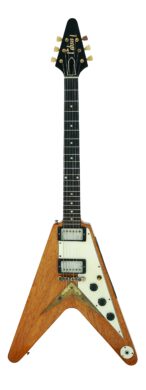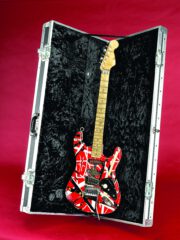Roughly one hundred years ago, a certain instrument was modified, or rather, promoted from acoustic to electric, to become the most important tool for modern popular music.
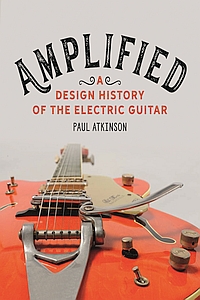 The electric guitar, depending on your source and information, was brought up around 1928, to be mass produced by another inventor in 1931, to make a comparatively quiet instrument sound much larger and louder on stage.
The electric guitar, depending on your source and information, was brought up around 1928, to be mass produced by another inventor in 1931, to make a comparatively quiet instrument sound much larger and louder on stage.
Before that, all kinds of improvements (such as using metal parts that resonated with the guitar and used the body’s vibration as in the dobro) and mechanical methods were tried. It became clear that for a guitar to be heard alongside an orchestra with much louder wind instruments, only electric amplification would work. Obviously, many amateur guitar makers, musicians and engineers alike were working on a solution at the same time.
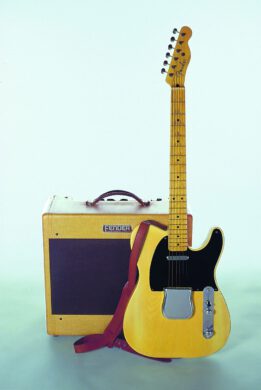 No other instrument can be credited with forging and ever improving modern popular music, especially electric blues, country, rockabilly, rock and heavy metal.
No other instrument can be credited with forging and ever improving modern popular music, especially electric blues, country, rockabilly, rock and heavy metal.
The great decades of guitar-driven rock music, the 1960s and 1970s, would never have happened without the electrification of the famous six-string instrument.
Neither would we know the names of legions of guitar virtuosos form all sorts of musical styles such as Hendrix, Page, Clapton, Paul, Beck, King, Moore, Satriani, Christian, Pass, Van Halen, Vai, Burrell, Farlow, Montgomery, Atkins, West and many, many others.
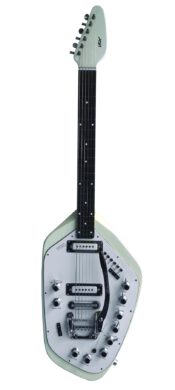 Only with the advent of synthesizers and sampling in the 1980s and 1990s the instrument lost some of its popularity. This short interruption, however, did not make the instrument a keeper in music stores for long.
Only with the advent of synthesizers and sampling in the 1980s and 1990s the instrument lost some of its popularity. This short interruption, however, did not make the instrument a keeper in music stores for long.
On the contrary, today, many famous manufacturers promote not only their current new models, but reinvent classic electric guitar models, often with some technical upgrades.
Some today even come with artificial dents, ‘road worn’ optics and altogether heavy sings of wear; only to suggest a certain well-aged playability and the ‘strong character’ of the instrument ready for purchase.
The eclectic guitar also has become an object (or rather ‘object d’art’) of extreme interest for collectors and investors, a small industry has established itself around it, where people with sufficient resources shop and trade for vintage instruments, guitar cases and all kinds of fan memorabilia, such as this players’ original custom instrument that he smashed on stage in the sixties or that player’s guitar or bass strap. On the one hand, this may extend an instruments’ life, but then, instruments were built to be played and not to be presented being glass, some may argue.
Then again, in a way it is a great career for any musical instrument that originally was nothing but a very experimental log with some strings, a tiny corpus, and giant first-generation pickups.
Needless to say that the literature on guitars, guitar manufacturers (and luthiers, as the master designers and builders are called correctly), guitar amplifiers, guides for collecting, repair, customization, and on various guitar brands and their histories, places of production, parts used in a certain area and so forth now fill several shelves.
In the book at hand, however, author Paul Atkinson merely concentrates on the basics of various guitar characteristics, their sound, built, materials, mostly of the most important names. The title definitely has the emphasis on guitar design.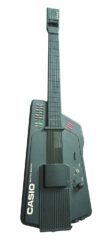
Here, almost 130 illustrations on photo paper (114 in color) capture the magic, design, plain beauty and exotic variants of the instrument. Guitars by all sorts of manufacturers are introduced in great detail and their respective special “abilities”; they left the factories of Gibson, Fender, B.C. Rich, Epihone, Vox, Gretsch, Rickenbacker, Stromberg, Vivi Tone, Magnatone and so forth. He also chronicles small companies and discontinued models and special design signature “axes,” for example, Clapton’s “Blackie,” Hill’s “Super Yob,” or “the axe” used by Simmons.
Atkinson also devotes a chapter on the technological aspects, i.e. anything that covers the nature of various pickup configurations (that produce huge differences in sound), woods (and later aluminum, plastic, and lightweight plexiglass), sting qualities, sustain qualities and customization and research that would change about everything concerning the classic look and sound of the guitar. Some 1980s instruments were named “guitar synthesizers” for a reason.
A tkinson, a professor of design and design history at Sheffield Hallam University, who also wrote the acclaimed the BBC guitar documentary Cigar Box Blues: The Makers of a Revolution, has compressed the history of this early electric instrument on 270 (heavy) pages.
tkinson, a professor of design and design history at Sheffield Hallam University, who also wrote the acclaimed the BBC guitar documentary Cigar Box Blues: The Makers of a Revolution, has compressed the history of this early electric instrument on 270 (heavy) pages.
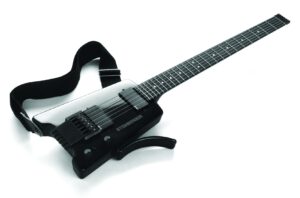 The chapters are both informative and gripping and feature countless quotes from expert luthiers, guitar gods, collectors, customization authorities, collectors, music journalists, designers and fans.
The chapters are both informative and gripping and feature countless quotes from expert luthiers, guitar gods, collectors, customization authorities, collectors, music journalists, designers and fans.
Furthermore, dozens of vintage ads from the 1940s – 1990s give some impressions on how a guitar, its upgraded design or features, changed over the decades and how consumers were approached by the industry, employing certain guitar models, popular musicians and contemporary ad arrangement.
A well-researched, if a bit hefty, Hardcover coffee-table book with excellent pictures.
Review by Dr. A. Ebert © 2021
Paul Atkinson. Amplified: A Design History of the Electric Guitar. Reaktion Books, 2021, 272 p.

